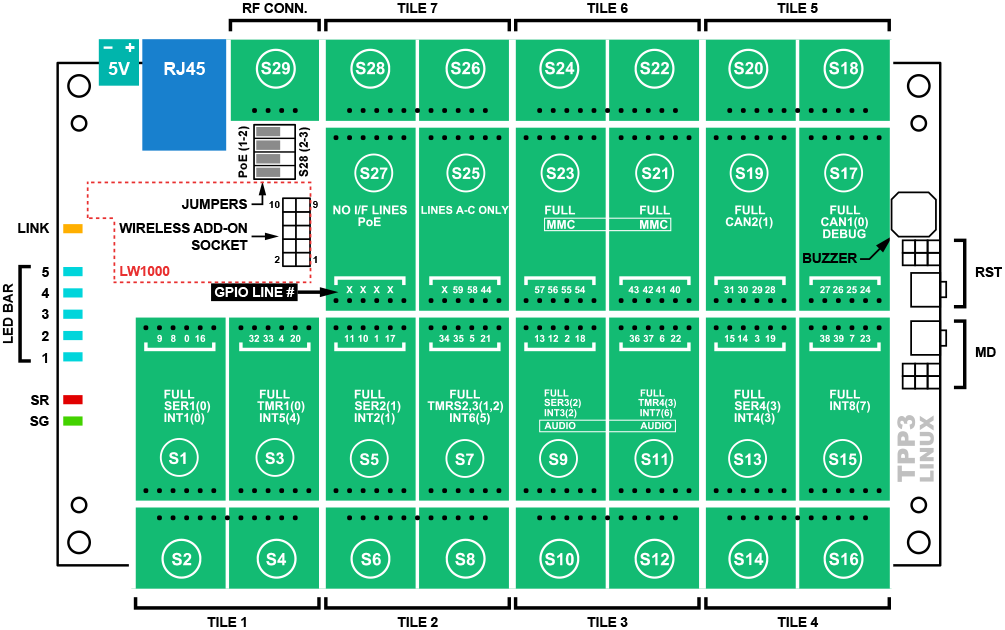Tiles, Sockets, Connectors, Controls

The LTPP3 features 14 "M" and 14+1 "C" sockets.
Sockets (S1) ~ (S28) form seven standard tiles.
There are 51 control lines connecting "M" sockets to the CPU. The number of control lines is smaller than the number of "M" sockets multiplied by four. This is because some sockets have a reduced number of control lines, or have no lines connected at all:
- Socket (S25) only has control lines A through C. Control line D is not implemented.
- Socket (S27) has no control lines connected to it.
- Remaining "M" sockets have all four control lines implemented.
Additionally:
- "M" sockets (S1), (S5), (S9), and (S13) have the UART capability.
- "M" socket (S17) has limited UART capability (only TX and RX lines are provided). This UART is intended to be used as a debug serial port (debug console port), and this is why (S17) is marked with the word "DEBUG."
- "M" sockets (S1), (S3), (S5), (S7), (S9), (S11), (S13), and (S15) have the interrupt capability.
- Tile 3 has the audio capability.
- "M" sockets (S17) and (S19) have the CAN capability.
- Tile 6 has the MMC (SD) capability.
- "M" socket (S27) has the PoE capability, provided that four LTPP3 jumpers are set to 2-3 position (see below).
- "C" socket (S29) exists exclusively for the installation of the RF connector Tibbit #37. This socket has no other functions.
Jumpers
Four jumpers next to the RJ45 jack define the connection between the "M" socket (S27), "C" socket (S28), and the RJ45 jack:
- When the jumpers are in the 1-2 position, four power lines from the RJ45 jack are connected to four I/O lines of (S27). Under this arrangement you can install an M1 PoE device into the (S27), or M2 PoE device into the (S25)-(S27).
- When the jumpers are in the 2-3 position, the RJ45 jack is disconnected from the socket (S27). The socket (S27) is instead connected to (S28) in a "standard tile way."
